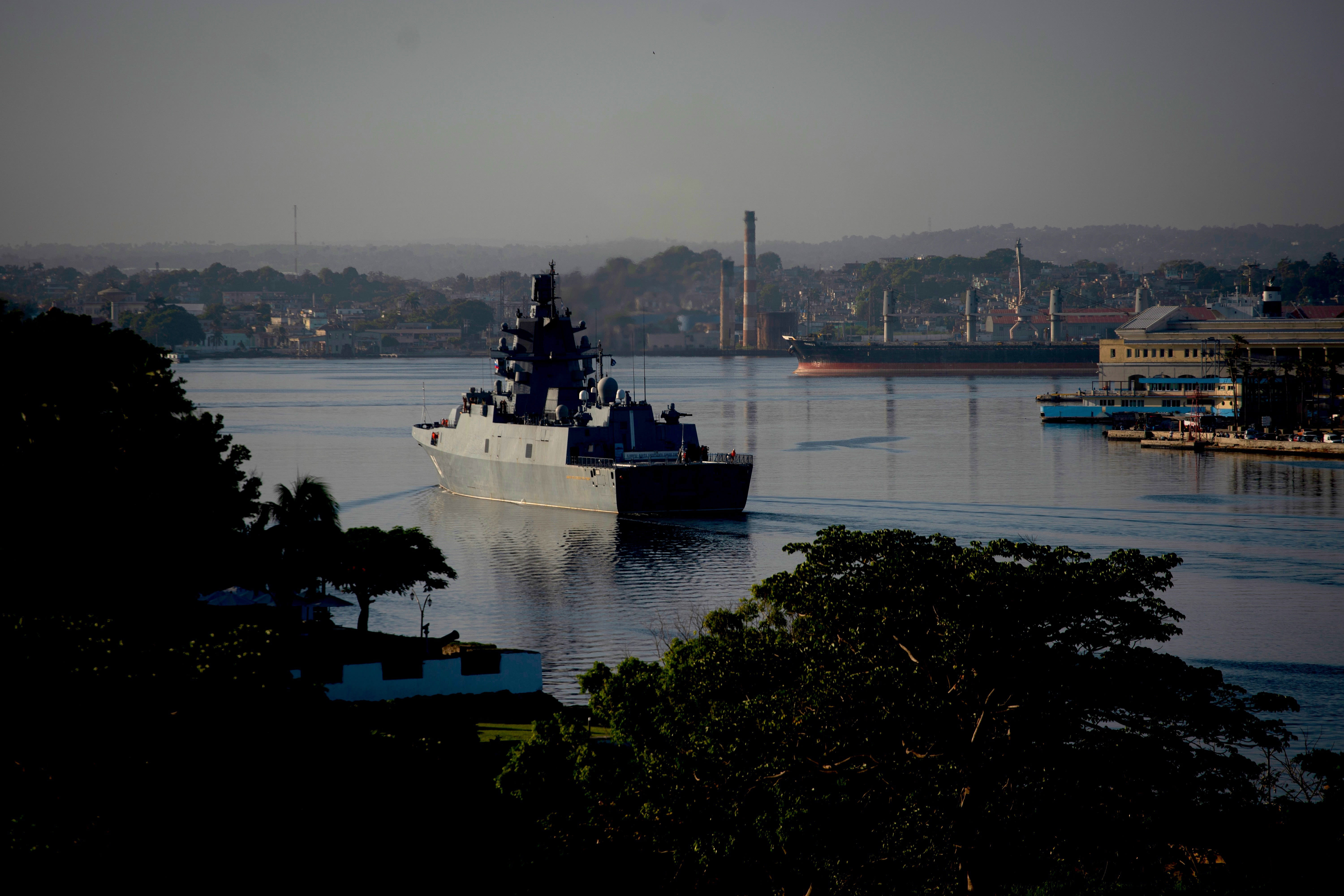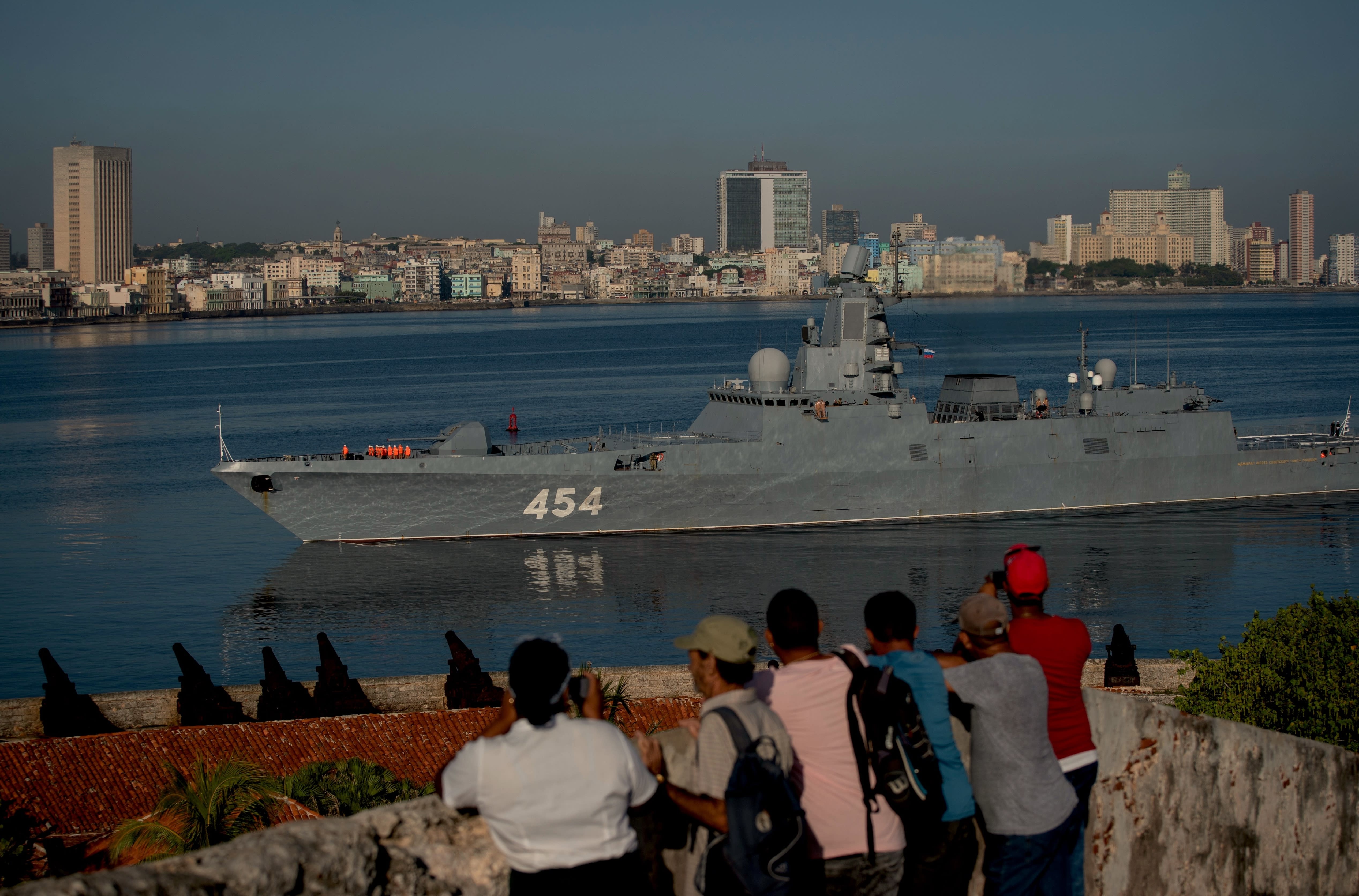Russian Naval Presence in Cuba: Russian Navy Cuba
The Russian naval presence in Cuba has its roots in the Cold War era. In 1962, the Soviet Union deployed nuclear-armed missiles in Cuba, triggering the Cuban Missile Crisis. After the crisis was resolved, the Soviet Union withdrew its missiles but maintained a naval presence in Cuba.
The Russian naval presence in Cuba consists of a variety of ships and submarines, including:
* Surface ships: These include destroyers, frigates, and corvettes. They are used for anti-submarine warfare, anti-air warfare, and surface warfare.
* Submarines: These include diesel-electric submarines and nuclear-powered submarines. They are used for anti-ship warfare, intelligence gathering, and special operations.
The Russian naval presence in Cuba has several strategic implications. First, it gives Russia a forward operating base in the Caribbean Sea. This allows Russia to project power into the region and to monitor US naval activity. Second, the Russian naval presence in Cuba helps to protect Cuba from attack. Third, it gives Russia a bargaining chip in negotiations with the United States.
The Russian naval presence in Cuba is a source of concern for the United States. The US government believes that the Russian naval presence could be used to support military operations against the United States or its allies. The US government has also expressed concern about the possibility of nuclear weapons being deployed in Cuba.
Cooperation between Russian and Cuban Navies
Russian navy cuba – The Russian and Cuban navies have a long history of cooperation, dating back to the Soviet era. In recent years, this cooperation has been strengthened, with the two countries conducting joint exercises and training programs. These exercises have included anti-submarine warfare, air defense, and search and rescue operations.
The benefits of this cooperation are numerous for both countries. For Russia, it provides an opportunity to project its naval power into the Caribbean Sea and to strengthen its ties with Cuba, a key ally in the region. For Cuba, it provides access to Russian naval technology and training, which helps to improve its ability to defend its territorial waters.
Joint Exercises and Training Programs
The Russian and Cuban navies have conducted a number of joint exercises in recent years, including:
- Anti-Submarine Warfare Exercise (ASWEX): This exercise is designed to improve the two navies’ ability to detect and track submarines.
- Air Defense Exercise (ADEX): This exercise is designed to improve the two navies’ ability to defend against air attacks.
- Search and Rescue Exercise (SAREX): This exercise is designed to improve the two navies’ ability to conduct search and rescue operations.
In addition to these exercises, the Russian and Cuban navies also conduct joint training programs. These programs provide Cuban naval personnel with training in a variety of areas, including navigation, seamanship, and weapons systems.
Benefits of Cooperation
The cooperation between the Russian and Cuban navies benefits both countries in a number of ways. For Russia, it provides an opportunity to project its naval power into the Caribbean Sea and to strengthen its ties with Cuba, a key ally in the region. For Cuba, it provides access to Russian naval technology and training, which helps to improve its ability to defend its territorial waters.
In addition, the cooperation between the two navies helps to promote stability in the Caribbean Sea. By working together, the two navies can help to deter potential threats to the region and to ensure the free flow of commerce.
Challenges to Russian Naval Presence in Cuba
Maintaining a naval presence in Cuba presents several challenges for Russia. These include logistical difficulties, geopolitical tensions, and the potential impact of US policy.
Logistically, Russia must overcome the distance between its home ports and Cuba. This requires a significant investment in fuel and resources, as well as the ability to maintain a supply chain over long distances.
Geopolitical Factors
The Russian naval presence in Cuba is also influenced by geopolitical factors. The United States has historically viewed Cuba as within its sphere of influence, and the presence of Russian forces there is seen as a potential threat. This could lead to tensions between the two countries and could affect the future of the Russian naval presence in Cuba.
US Policy, Russian navy cuba
US policy towards Cuba could also impact the Russian naval presence there. If the US were to normalize relations with Cuba, it could lead to a reduction in tensions and could make it more difficult for Russia to maintain its naval presence. Conversely, if the US were to increase pressure on Cuba, it could lead to an increase in tensions and could make it easier for Russia to justify its naval presence.
Amidst the Cold War’s naval tensions, the Russian Navy’s presence in Cuba sparked concerns. However, in a different realm of rivalry, the upcoming clash between Brazil and Mexico in the soccer arena pitches excitement and anticipation. Yet, the strategic maneuvers of the Russian Navy in Cuba remain a geopolitical focus, underscoring the complexities of global power dynamics.
The Russian Navy’s presence in Cuba during the Cold War was a significant geopolitical event. However, beyond the realm of international relations, the topic also resonates with the story of Solomon Choi, a talented artist whose “16 Handles” series solomon choi 16 handles explores the intersection of art, identity, and cultural heritage.
His work serves as a poignant reminder of the complex historical narratives that intertwine with global events like the Russian Navy’s presence in Cuba.
The Russian Navy’s presence in Cuba has been a source of concern for the United States for decades. In recent years, however, the focus has shifted to the USA soccer team, which has emerged as a global powerhouse. Despite the different nature of these two topics, they are both intertwined in the complex tapestry of international relations.
The Russian Navy’s presence in Cuba serves as a reminder of the Cold War era, while the success of the USA soccer team represents the country’s growing global influence.
The Russian Navy’s presence in Cuba has been a source of concern for the United States for decades. The two countries have been at odds over the issue since the Cold War, when the Soviet Union stationed nuclear missiles on the island.
In recent years, Russia has been increasing its military presence in Cuba, a move that has been met with concern by the United States. Nancy Mace , a Republican member of the House of Representatives, has been a vocal critic of Russia’s actions in Cuba.
She has called for the United States to take a more aggressive stance against Russia and to increase its military presence in the region.
The Russian Navy’s presence in Cuba has been a source of concern for the United States since the Cold War. In recent years, however, there has been a thaw in relations between the two countries, and the Russian Navy’s presence in Cuba has been reduced.
This has led to speculation that the Russian Navy may be planning to withdraw from Cuba altogether. If this happens, it would be a significant development in the history of US-Russian relations. It would also be a boost for portugal fc , which has been struggling to compete in recent years.
The Russian Navy’s withdrawal from Cuba would free up resources that could be used to improve the team’s performance. It would also be a sign that the Cold War is truly over.

